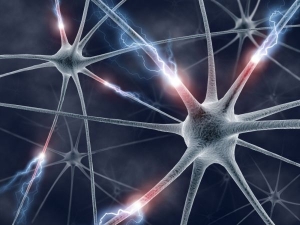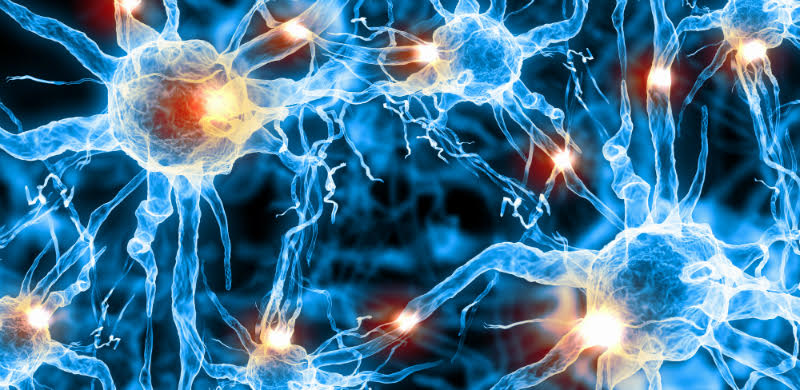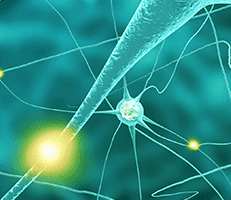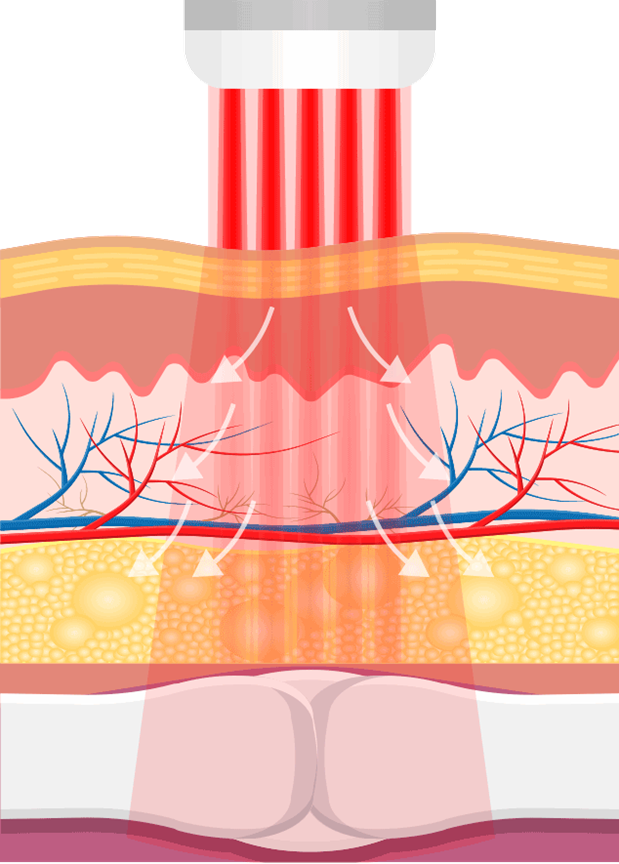Laser Light Energy
Biological responses of cells to infrared laser energy occur due to photochemical reactions defined by the stimulation of energy within the cell, passed through the cell electrons by laser photons. This excitation or reconfiguring of electrons results in photo-ionization, oxidation, dissociation and molecular rearrangement. Subsequently, a variety of reaction channels are activated, resulting in a cascade of biochemical reactions characteristic to the individual cell stimulated. For example, low-level laser stimulation has been shown to shift the cellular redox state toward oxidation. Biologically the shift toward oxidation is associated with stimulation of vitality. Furthermore, the cascade of biochemical reactions does not appear to need the continuous application of light energy to proceed once initiated.
This explains the beneficial effect of low-level laser therapy to tissue of lower than normal pH and oxygenation, such as, wound, inflammation and ischemic tissue. These tissues have responded more dramatically clinically than cells with more normal nutrient and pH parameters.
Laser photon stimulation of biologically active tissue is the crux of the laser energy tissue effect. While the exact mechanism of this stimulation is the focus of ongoing patient treatments, it has been proven that the diseased cells are able to benefit from the external application of energy through laser light to normalize and enhance their functional state.
Light energy is absorbed in the form of photons into the photo-acceptor molecules in the mitochondria.
This results in oxidation in the cellular respiratory chain with the release of energy that generates biochemical reactions that store the energy in the form of phosphate bonds. ATP (adenosine triphosphate) is released as a usable energy source to be distributed throughout the cell to sponsor the energy needed to normalize cell activity and function. Hence the absorption of light energy is transduced to a cascade of biochemical reactions that stimulate the resumption of cell function from the diseased state. This refinancing of the energy deficit from an outside energy source allows the cell to repair and correct cellular metabolic imbalances.



